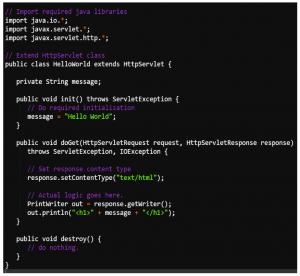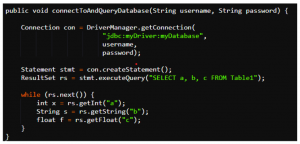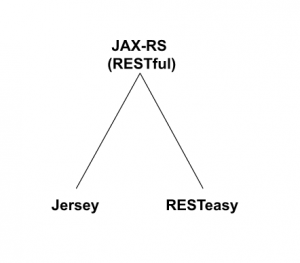Many reasons make Java a popular object-oriented programming language, which is why countless applications are built using it. Java succeeds at this with its continuous enhancement, powerful development tools, and strong and active community support.
Java offers a number of advanced concepts that you should be familiar with if you are just starting out, while some of these advanced concepts may seem intimidating to you first. However, with the right guidance and resources, you can unlock the power of Java and use its many features to create sophisticated applications.
Implementing Advanced Java Concepts for Maximum Efficiency
Advanced Java is a subset of the Java programming languages. The technology is often referred to as an advanced version of Java designed specifically for building web-based, network-centric, enterprise applications. While normal applications can be easily built using core Java concepts, advanced Java concepts, such as JSP, Servlets, JDBC, design patterns, Thymeleaf, etc., can be used to extend the capabilities and features of web applications. In the following sections, we will learn more about these topics.
Let’s begin then,
Unlocking The Secrets Of Servlets
What are servlets?
Servlets are Java-based components used to extend the capabilities of servers that host applications accessed using a request-response programming model. These programs can dynamically generate content for websites, handle user requests, interact with databases, and perform many other server-side tasks. Servlets run in a servlet container, such as Apache Tomcat or Jetty, they have been around for a long time and are a popular choice for building Java-based web applications, due to their versatility and advanced features.
Servlets life cycle
The Servlet Lifecycle consists of the following phases:
- init(): called when the servlet is first loaded into memory
- service(): called to handle incoming requests
- destroy(): called just before the servlet is removed from memory
Why are they necessary?
Servlets are a critical part of any Java web application. Servlets handle requests and provide a platform on which you can build your web application.
Let’s explore a few of the key benefits of using servlets in Java web applications:
- Servlets are needed because they allow dynamic and interactive web pages to be created, where the content can change based on user inputs or other conditions.
- Servlets can be embedded into other applications or deployed as standalone applications.
- They are a popular Java technology that is used to create modular, scalable web applications.
- Servlets are Java-based components that run on a server and generate dynamic web pages.
- Servlet technology is used to develop a web application (resides at the server side and generates a dynamic web page).
- Using Servlets, you can easily deploy and manage your application, as they package up its functionality into separate files.
- This will allow you to modularize your code, streamline your development process, and improve the performance of your web application
Sample Code
Please see the sample code structure of the servlet to demonstrate hello world.
Below 👇

Getting started with the Java Persistence API
Java Persistence API (JPA) is a standard for accessing, persisting, and managing data between Java objects/classes and relational databases, while JPA is not a framework; instead, it defines a set of concepts that guide implementers.
All Java applications can use the JPA specification to specify which objects should be stored, and how they should be stored, additionally it facilitates object-relational mapping and allows Java applications to work directly with objects instead of SQL statements.
To get started with JPA:
- Choose a JPA implementation: There are several JPA implementations available, including Hibernate, EclipseLink, and OpenJPA.
- Set up your project: Add the JPA implementation library to your project and configure it using a persistence.xml file.
- Define your entity classes: Entity classes represent the objects you want to persist in the database. Annotate the classes with JPA annotations to specify how they should be mapped to database tables.
- Create an Entity Manager: Use EntityManagerFactory to create an entity manager, which is the primary interface for interacting with the persistence context.
- Use EntityManager to perform CRUD operations: Use the EntityManager to perform basic Create, Read, Update, and Delete (CRUD) operations on your entities.
- Transactions: JPA provides support for transactions through the use of EntityTransaction. Use transactions to ensure data integrity when making multiple changes to the database.
- Deploy and run your application: Deploy your application to a servlet container or an application server that supports JPA
Java Persistence consists of four areas:
- The Java Persistence API
- The query language
- The Java Persistence Criteria API
- Object/relational mapping metadata
Configuring JPA
JPA, like the majority of contemporary frameworks, supports coding by convention, commonly referred to as “convention over configuration”, where the framework offers a default configuration based on industry best practices.
Tip: Before you start to learn JPA, you must have basic knowledge of Java and relational databases like MySQL or Oracle.
Introduction to JDBC
Java Database Connectivity, or JDBC, is a legacy API that has been around since Java’s early days. By providing Java database connectivity standards, it makes it possible to connect to and execute queries against numerous databases.
JDBC offers simpler and more common APIs to allow access to data stored in relational databases (RDBs) and can be used to develop database related programs. Along with the database driver, databases and spreadsheets can be accessed by JDBC.
JDBC enables you to write Java programmes that manage the following three programming tasks:
- Connect to a data source such, as a database.
- Send database queries and update statements.
- Retrieve and process the database results in response to your query.
Please refer to this simple code below 👇 to have a better understanding of these three steps:

This code creates a DriverManager object to connect to a database driver and log into the database, a Statement object to carry your SQL language query to the database, and a Result Set object to show the results of your query.
Creating RESTful Web Services JAX-RS
JAX-RS stands for Java API for RESTful Web Services. It is a Java API specification for building RESTful web services, and a part of the Java EE platform. It provides a standard API for creating RESTful web services in Java and allows developers to easily develop and consume RESTful web services.
The JAX-RS API is implemented in two ways:
- Jersey Structure
- RESTEasy

With JAX-RS, you can easily develop Web services designed according to the Representational State Transfer (REST) architectural style in Java based on annotations. The REST software style should make it easier for you to develop lightweight web services more quickly.
Have fun learning JAX-RS!
Expediting Development with Thymeleaf
A better replacement for JSP (Java Server Pages) Thymeleaf is a modern server-side Java template engine for both web and standalone environments. In addition to being a robust HTML editor, Thymeleaf also facilitates the creation of static prototypes, allowing development teams to collaborate more effectively, with an ultimate goal to bring natural templates to the development workflow.
It has a number of powerful features that make it a great choice for modern-day HTML5 JVM web development. Along with modules for Spring Framework, a host of integrations with your favorite tools, and the ability to plug in your own functionality, there is much more it can do.:
- It is powerful and easy to use
Thymeleaf does Not need any prior knowledge of template engines in order to start using it. It has the ability to generate source code, XML files, and Java objects. This makes it perfect for creating complex applications or websites.
- It speeds up your development process
Thymeleaf makes sure your code is structured correctly and matches the look and feel of your final product. Thymeleaf can help you fill in missing pieces of your application or website so that everything works together as planned.
- Offer ready-made templates
Templates are simply pre-written pieces of code that can be used over and over again to create similar or identical pages. This makes template development fast and easy, since you don’t have to write the code from scratch every time you need to create a new page. Developers can also create custom templates that can be used to generate source code or other documents.
- Natural looking templates
HTML templates written in Thymeleaf still look and work like HTML, allowing the actual templates that run in your application to continue to function as useful design artifacts.

Who’s using Thymeleaf?




![]()
Important Java Design Patterns
Design patterns help solve common object-oriented design problems, but since they are not restricted to a particular programming language, they are considered to be just ideas rather than implementations. The design pattern is usually used during the first phase of the Software Development Life Cycle (SDLC). It provides more information to create programs that are more efficient, flexible, maintainable, and reusable when used during this phase of SDLC.
Java has three types of design patterns:
| Creational design pattern | Structural design pattern | Behavioral design pattern |
| Creational design patterns include the Factory pattern, Abstract Factory pattern, Singleton pattern, Builder pattern, and prototype pattern. These are primarily concerned with the production of objects. | Structural design patterns are commonly used to create class structures. Popular structural design patterns include adapter, bridge, and composite. | In addition to improving object interaction, these allow for easy implementation extension. Observer patterns, strategy patterns, and other behavioral patterns are examples. |
Benefits of using Design Patterns
These are some of the benefits that we can gain from using design patterns in our applications:
- Design patterns are reusable and can be used in multiple projects.
- Design patterns help us define system architecture.
- Design patterns make the application design transparent.
- Design patterns have already been thoroughly examined and validated, allowing for worry-free use.
- Design patterns help us create better systems and make the architecture of those systems more clear.
Stay tuned for more,
We hope learning these advanced Java concepts will help take your Java programming skill to the next level. Using these advanced features will help you write code that is more efficient and easy to read, making it easier for other developers to understand and work with it.
Now is the time to start learning these advanced concepts, see you soon with more interesting topics, so stay tuned.
Until then, Keep coding. 🧑💻






Add comment